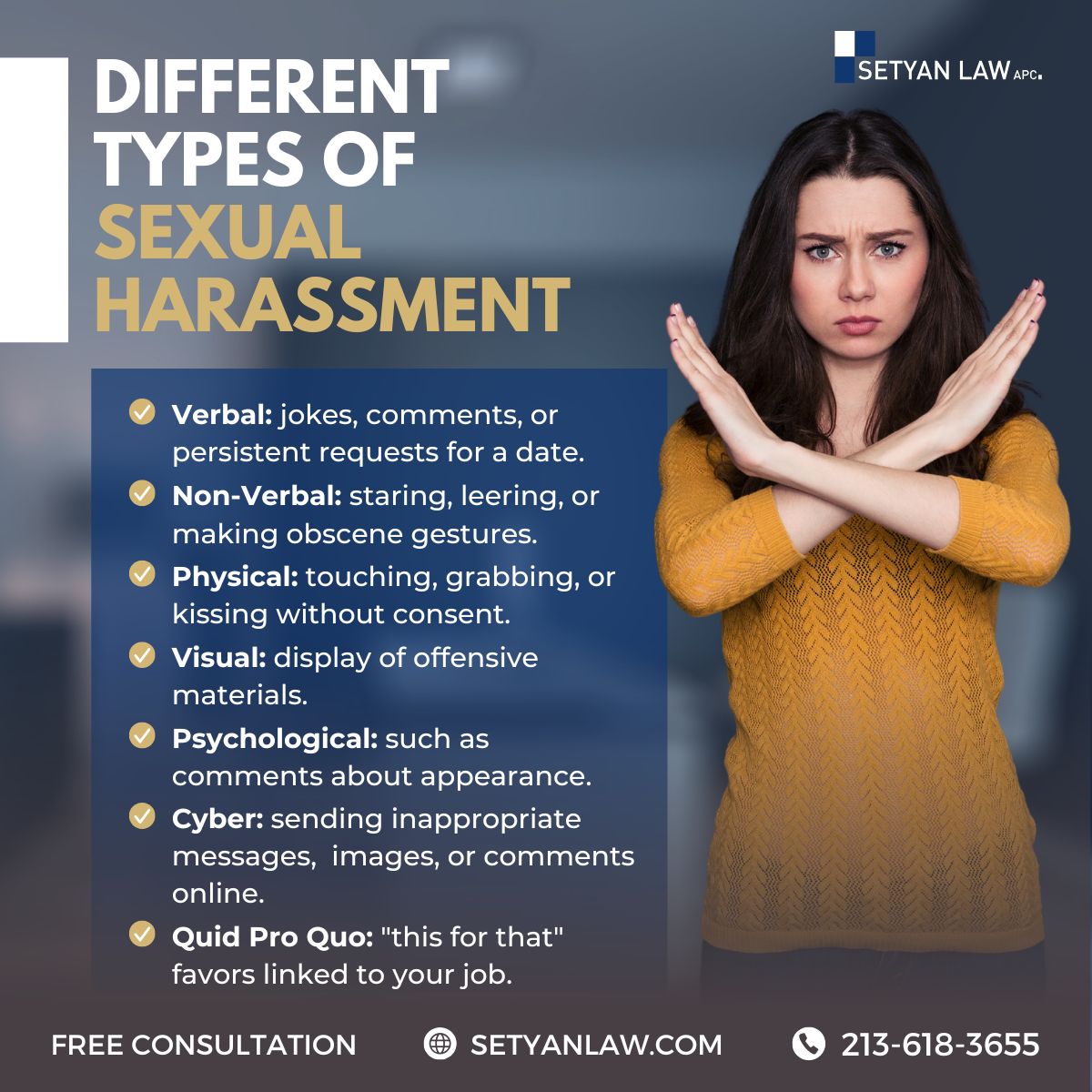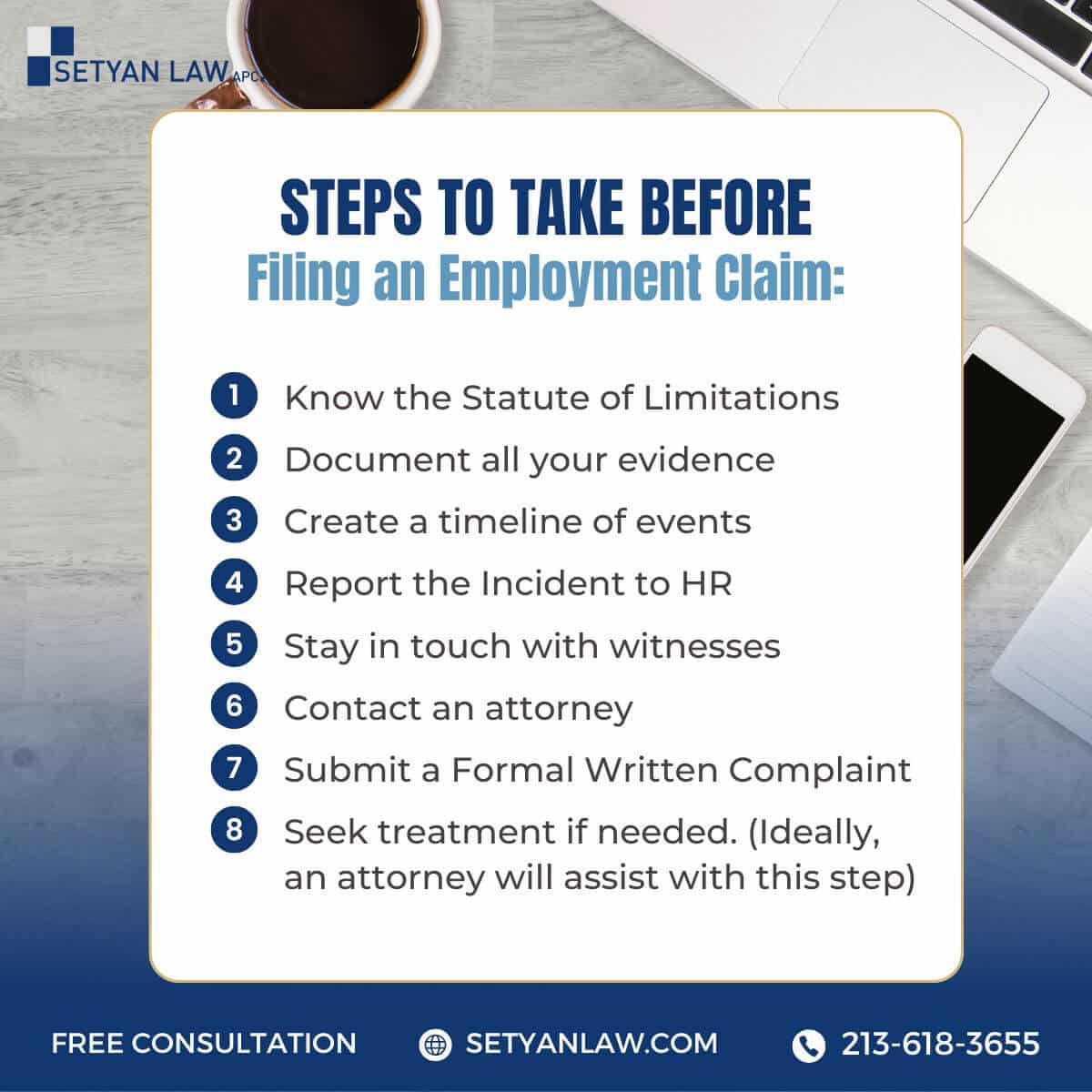Updated August 23, 2025
A Comprehensive Guide to Filing a Sexual Harassment Lawsuit
Sexual harassment in the workplace is a serious issue that can have profound impacts on victims’ emotional well-being, career prospects, and overall quality of life. If you’ve experienced sexual harassment at work, it’s crucial to understand your rights and the steps you can take to seek justice. This comprehensive guide will walk you through the process of filing a sexual harassment lawsuit, providing you with the knowledge and resources needed to protect yourself and hold perpetrators accountable.
Sexual harassment is not only morally reprehensible but also illegal under both federal and state laws. By taking action, you not only stand up for yourself but also contribute to creating safer work environments for others. Let’s delve into the intricacies of filing a sexual harassment lawsuit, from recognizing the signs to navigating the legal system.
Understanding Sexual Harassment in the Workplace
Sexual harassment encompasses a wide range of unwelcome behaviors of a sexual nature that create a hostile, intimidating, or offensive work environment. It’s essential to recognize the various forms it can take to identify when you’re being subjected to such treatment.
Types of Sexual Harassment
Sexual harassment generally falls into two categories:
- Quid Pro Quo Harassment: This occurs when job benefits or opportunities are contingent upon submitting to sexual advances or requests. For example, a supervisor implying that a promotion depends on going on a date with them.
- Hostile Work Environment: This type of harassment involves pervasive, unwelcome conduct of a sexual nature that interferes with an employee’s ability to perform their job or creates an intimidating atmosphere. Examples include inappropriate touching, displaying sexually explicit materials, or making persistent sexual comments or jokes.
- Unwanted physical contact or touching
- Sexually suggestive comments, jokes, or gestures
- Requests for sexual favors
- Displaying or sharing sexually explicit materials
- Persistent questions about one’s personal life or sexual preferences
- Retaliation for rejecting sexual advances
- Date, time, and location of each occurrence
- Description of the harassing behavior
- Names of any witnesses present
- Your immediate reaction and response
- Any physical or emotional effects you experienced
- Emails, text messages, or social media communications
- Photos or videos of inappropriate behavior or materials
- Voicemails or recordings of verbal harassment
- Copies of performance reviews or other work-related documents that may be relevant
- It gives your employer the opportunity to address and rectify the situation.
- It creates a formal record of your complaint.
- It may be necessary to demonstrate that you took appropriate steps before filing a lawsuit.
- Notifying your immediate supervisor (unless they are the harasser)
- Contacting the Human Resources department
- Filing a formal written complaint
- Dates and times of all conversations or meetings about your complaint
- Names and positions of individuals you spoke with
- Summaries of what was discussed
- Copies of any written complaints or responses you receive
- Termination or demotion
- Reduction in pay or hours
- Negative performance reviews
- Transfer to less desirable positions or shifts
- Increased scrutiny or micromanagement
- Evaluate the strength of your case
- Advise you on the best course of action
- Help you navigate complex legal procedures
- Negotiate with your employer on your behalf
- Represent you in court if necessary
- Experience with sexual harassment and employment law cases
- Track record of successful outcomes
- Communication style and availability
- Fee structure (many attorneys work on a contingency basis)
- Personal comfort level and trust
- Submitting an intake questionnaire or scheduling an interview
- Providing details about the harassment and your employer
- Receiving a Notice of Right to Sue, which allows you to proceed with a lawsuit
- EEOC complaints must generally be filed within 180 days of the last incident of harassment
- This deadline is extended to 300 days in states with their own anti-discrimination laws
- State agency deadlines vary but are often longer than federal deadlines
- Employment records and personnel files
- Company policies and procedures
- Witness statements
- Expert testimony (e.g., from mental health professionals or workplace culture experts)
- Claiming the behavior wasn’t severe or pervasive enough to constitute harassment
- Arguing that the company took appropriate corrective action
- Attempting to discredit your character or work performance
- Depositions (sworn out-of-court testimony)
- Interrogatories (written questions that must be answered under oath)
- Requests for documents
- Subpoenas for additional records or witness testimony
- Faster resolution
- Lower legal costs
- Guaranteed compensation
- Avoidance of public trial proceedings
- The strength of your case
- Potential compensation from a trial verdict
- Emotional and financial costs of continuing litigation
- Desire for public accountability versus privacy
- Policy changes within the company
- Mandatory sexual harassment training for employees
- Reinstatement or transfer to a different department
- Removal of negative information from your personnel file
- Clearly and concisely describing the harassment you experienced
- Explaining how the harassment affected you personally and professionally
- Maintaining composure and credibility under cross-examination
- Reviewing their potential testimony
- Discussing likely cross-examination questions
- Emphasizing the importance of honesty and consistency
- Settlement: As discussed earlier, many cases are resolved through negotiated settlements.
- Jury Verdict: If your case goes to trial, a jury will determine whether sexual harassment occurred and, if so, what damages should be awarded.
- Bench Trial: In some cases, a judge may hear the evidence and make a ruling without a jury.
Recognizing the Signs
Sexual harassment can be subtle or overt. Some common signs include:
It’s important to note that sexual harassment can occur between individuals of any gender and can be perpetrated by supervisors, colleagues, or even clients or customers.
Documenting the Harassment
If you believe you’re experiencing sexual harassment, it’s crucial to start documenting the incidents immediately. Proper documentation can significantly strengthen your case if you decide to take legal action.
Creating a Detailed Record
Keep a journal or log of all harassment-related incidents, including:
Preserving Evidence
Collect and safeguard any tangible evidence of the harassment, such as:
Store this evidence in a secure location outside of your workplace to ensure it remains accessible to you.
Reporting Sexual Harassment Internally
Before pursuing legal action, it’s generally advisable to report the harassment through your company’s internal channels. This step is important for several reasons:
Following Company Procedures
Review your employee handbook or company policies to understand the proper procedure for reporting sexual harassment. Typically, this involves:
Be sure to follow the prescribed steps and keep copies of all communications related to your complaint.
Documenting the Reporting Process
As you report the harassment internally, maintain detailed records of:
This documentation will be valuable if you need to escalate your complaint or pursue legal action.
Understanding Your Legal Rights and Protections
Before proceeding with a lawsuit, it’s essential to familiarize yourself with the laws that protect you from sexual harassment and retaliation.
Federal Laws
Title VII of the Civil Rights Act of 1964 is the primary federal law prohibiting sexual harassment in the workplace. It applies to employers with 15 or more employees and protects against both quid pro quo and hostile work environment harassment.
State Laws
Many states have their own laws addressing sexual harassment, which may provide additional protections or apply to smaller employers. For example, California’s Fair Employment and Housing Act (FEHA) applies to employers with five or more employees and offers broader protections than federal law.
Anti-Retaliation Provisions
Both federal and state laws prohibit employers from retaliating against employees who report sexual harassment or participate in related investigations. Retaliation can include actions such as:
Understanding these protections can help you feel more confident in asserting your rights and pursuing justice.
Seeking Legal Counsel
While it’s possible to navigate the legal process on your own, consulting with an experienced sexual harassment attorney can significantly improve your chances of a successful outcome.
Benefits of Legal Representation
An attorney specializing in employment law and sexual harassment cases can:
Choosing the Right Attorney
When selecting a lawyer to handle your sexual harassment case, consider the following factors:
Schedule consultations with multiple attorneys to find the best fit for your needs and circumstances.
Filing a Complaint with Government Agencies
Before you can file a lawsuit in court, you typically need to file a complaint with the appropriate government agency. This process is known as “exhausting administrative remedies.”
Federal Complaints
To file a federal complaint, you’ll need to contact the Equal Employment Opportunity Commission (EEOC). The process involves:
The EEOC may choose to investigate your complaint or may issue the Notice of Right to Sue immediately upon request.
State Complaints
Many states have their own agencies that handle employment discrimination complaints. For example, in California, you would file with the Department of Fair Employment and Housing (DFEH).
The state agency process is similar to the federal process, but timelines and specific requirements may vary.
Timelines and Deadlines
It’s crucial to be aware of the time limits for filing complaints:
Missing these deadlines can result in losing your right to pursue legal action, so it’s essential to act promptly.
Preparing for Litigation
If you decide to move forward with a lawsuit, thorough preparation is key to building a strong case.
Gathering Additional Evidence
Your attorney will help you collect and organize evidence to support your claims, which may include:
Anticipating Defense Strategies
Be prepared for common defense tactics, such as:
Your attorney will help you anticipate and counter these strategies.
Understanding the Discovery Process
During discovery, both sides exchange information and evidence related to the case. This may involve:
Be prepared to participate fully in this process and provide honest, detailed responses to all inquiries.
Negotiating a Settlement
Many sexual harassment cases are resolved through settlement negotiations rather than going to trial. Settlement can offer several advantages:
Evaluating Settlement Offers
When considering a settlement offer, weigh factors such as:
Your attorney can help you assess whether a settlement offer is fair and in your best interests.
Non-Monetary Terms
In addition to financial compensation, consider negotiating for non-monetary terms such as:
These terms can help prevent future harassment and protect other employees.
Preparing for Trial
If your case proceeds to trial, thorough preparation is essential for presenting a compelling case to the judge or jury.
Developing Your Testimony
Work with your attorney to prepare your testimony, focusing on:
Practice your testimony to feel more confident and prepared.
Witness Preparation
Help your attorney prepare witnesses who will testify on your behalf by:
Understanding Courtroom Procedures
Familiarize yourself with courtroom etiquette and procedures to feel more comfortable during the trial. Your attorney will guide you through what to expect and how to conduct yourself.
Potential Outcomes and Appeals
The resolution of your sexual harassment lawsuit can take several forms:
Types of Damages
If you prevail in your lawsuit, you may be awarded various types of damages:
- Back pay for lost wages and benefits
- Front pay for future lost earnings
- Compensatory damages for emotional distress and other non-economic harms
- Punitive damages to punish particularly egregious behavior
- Attorney’s fees and court costs
Appeals Process
If either party is dissatisfied with the outcome, they may have the right to appeal the decision to a higher court. The appeals process can be lengthy and complex, potentially adding months or years to the resolution of your case.
Moving Forward After Resolution
Regardless of the outcome, taking action against sexual harassment can be an emotionally challenging experience. It’s important to focus on healing and moving forward with your life and career.
Seeking Support
Consider seeking support from:
- Mental health professionals
- Support groups for sexual harassment survivors
- Career counselors to help with job transitions if necessary
Advocating for Change
Use your experience to advocate for stronger workplace protections and cultural changes. This might involve:
- Speaking out about your experience (if you feel comfortable doing so)
- Supporting others who have experienced harassment
- Working with organizations that promote workplace equality and safety
By taking action against sexual harassment, you not only stand up for yourself but also contribute to creating safer, more equitable work environments for everyone.
Remember, you have the right to a workplace free from sexual harassment, and there are legal protections and resources available to help you assert that right. By understanding the process of filing a sexual harassment lawsuit and working with experienced sexual harassment lawyers, you can take important steps toward justice and healing.








